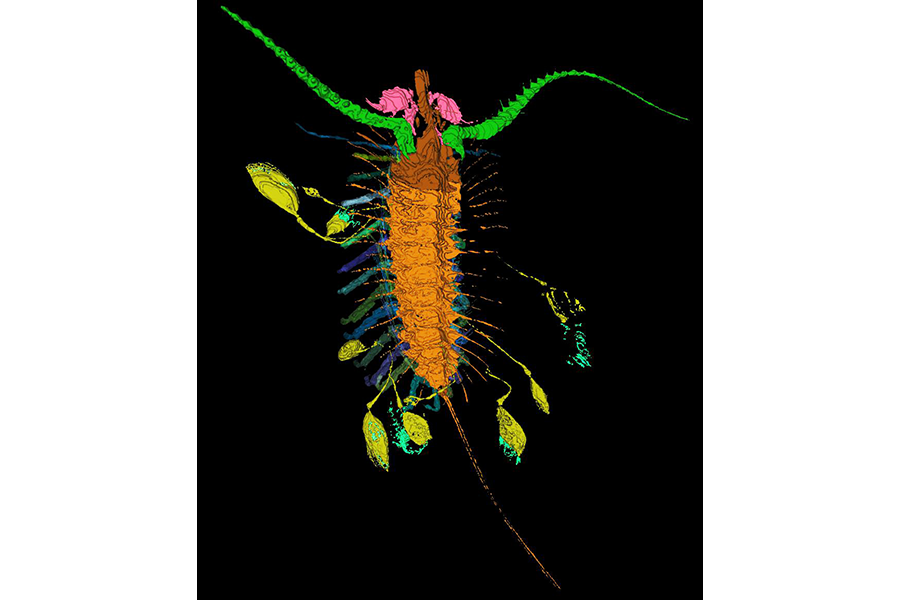Kite kids? Ancient arthropod kept offspring on a short leash – literally.
Loading...
Scientists have discovered a bizarre, ancient creature with an oddly effective childcare strategy – it carried its young in capsules tethered to its body.
The 430-million-year-old arthropod, distantly related to lobsters and centipedes, spent its days on the ancient sea floor, trailing its babies along behind its body in kite-like capsules.
Scientists named the arthropod Aquilonifer spinosus, or “spiny kite bearer,” in reference to its appearance and 2003 bestselling novel, "The Kite Runner."
“We have named it after the novel by Khalid Hosseini due to the fancied resemblance of the juveniles to kites,” lead researcher and Yale Peabody Museum of Natural History curator Derek Briggs said in a press release.
The international team of researchers published their discovery this week in the Proceedings of the National Academy of the Sciences.
Researchers found the fossil embedded in volcanic deposits in Herefordshire, England. The half-inch-long creature had 10 offspring tethered to it by long threads.
“As the parent moved around, the juveniles would have looked like decorations or kites attached to it,” says Professor Briggs in the release. “It shows that arthropods evolved a variety of brooding strategies beyond those around today – perhaps this strategy was less successful and became extinct.”
Researchers say that this creature’s childcare strategy was unusual.
“Modern crustaceans employ a variety of strategies to protect their eggs and embryos from predators – attaching them to the limbs, holding them under the carapace, or enclosing them within a special pouch until they are old enough to be released – but this example is unique,” said Briggs.
At first, researchers were not even sure what the pouches were. They theorized that kite-like passengers could be parasites or some sort of hitchhiker, along for the ride. But the pouches were too far from the arthropod’s body to be parasites, and the arthropod had the ability to reject hitchhikers (due to its long front appendages).
By remaining close to their parents, scientists say, the juvenile arthropods were better protected from predators. They weren’t just freeloaders, though. Researchers theorize that the juvenile arthropods were able to acquire their own phytoplankton snacks along the way.
Researchers say this discovery is particularly interesting, because arthropods don’t generally engage in this kind of “brooding,” or childcare, behavior.
Briggs told the Los Angeles Times that while crawfish occasionally tether their young to their limbs, the back-tethered arrangement is unusual.
Researchers used 3D modeling to better understand the tiny fossil.








